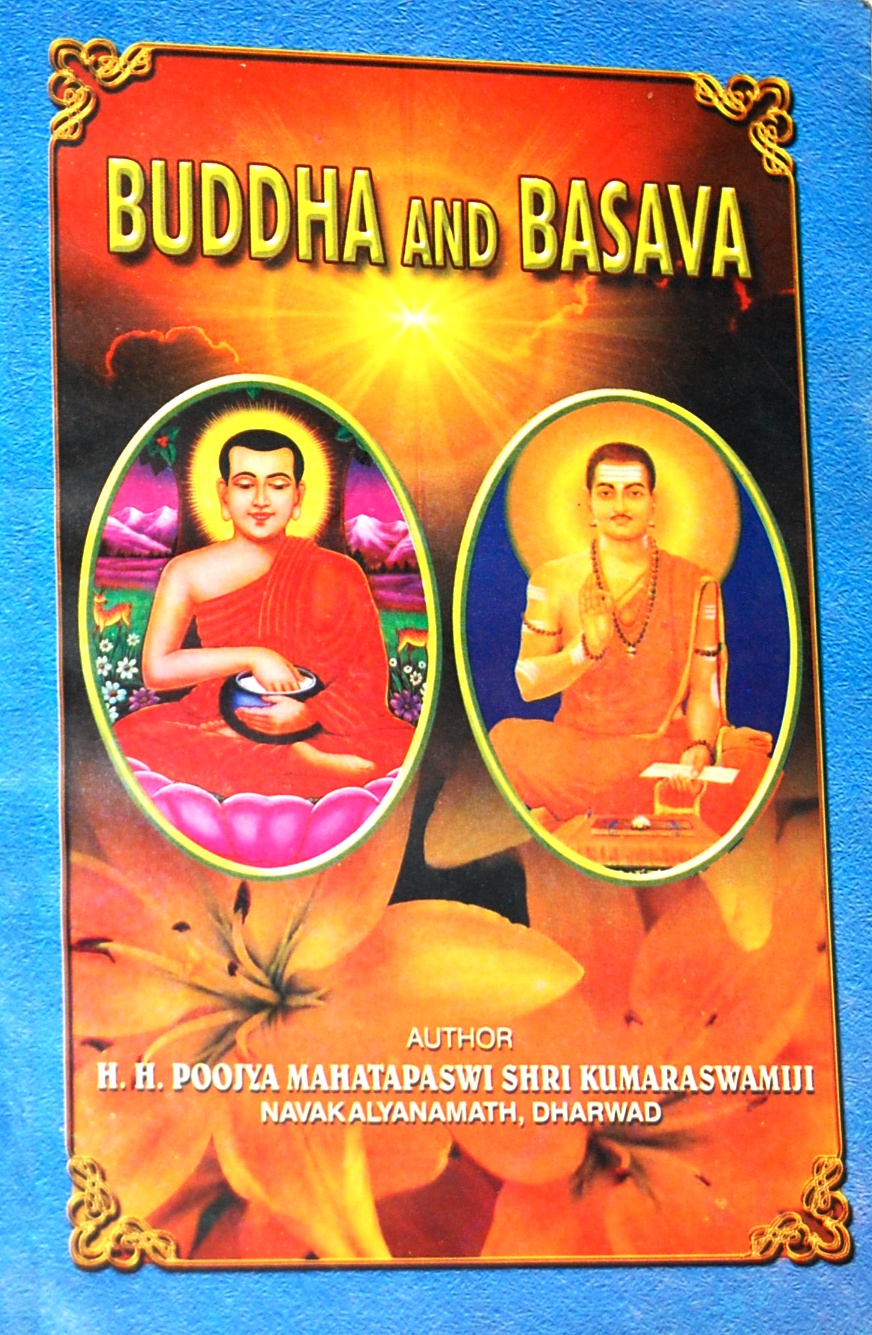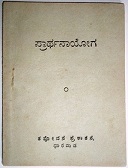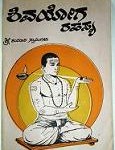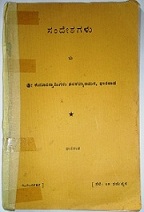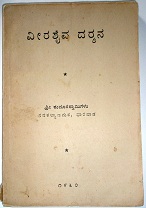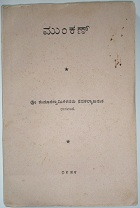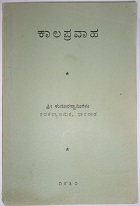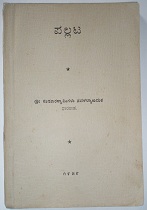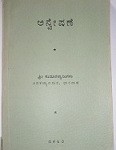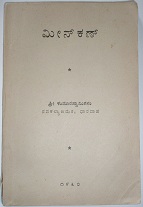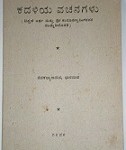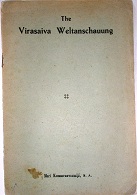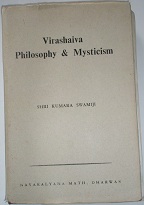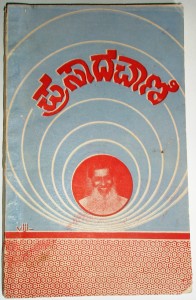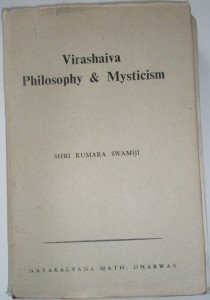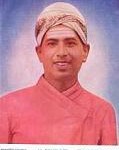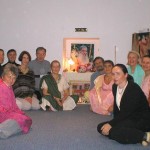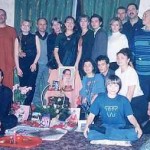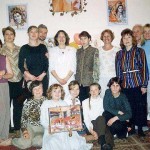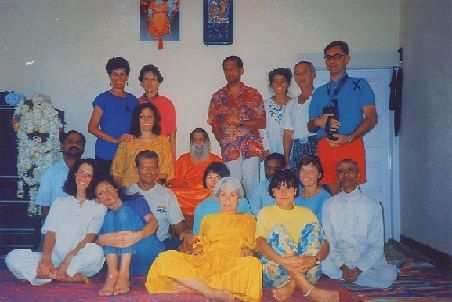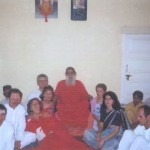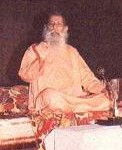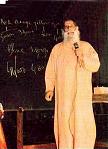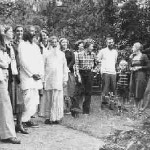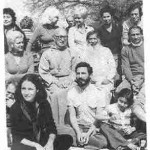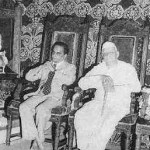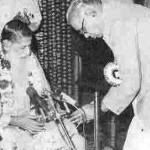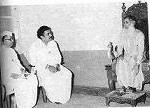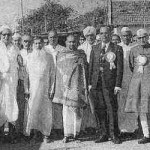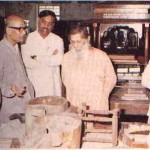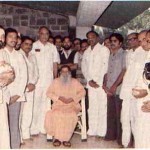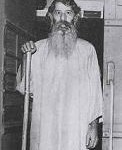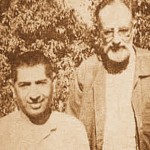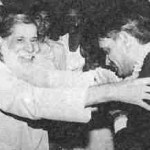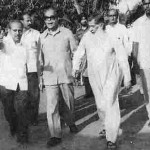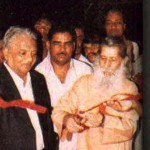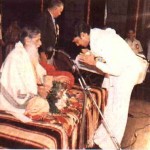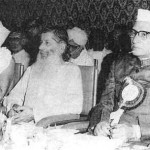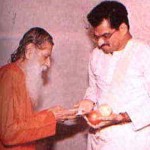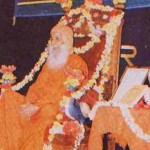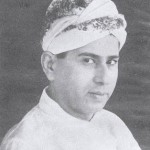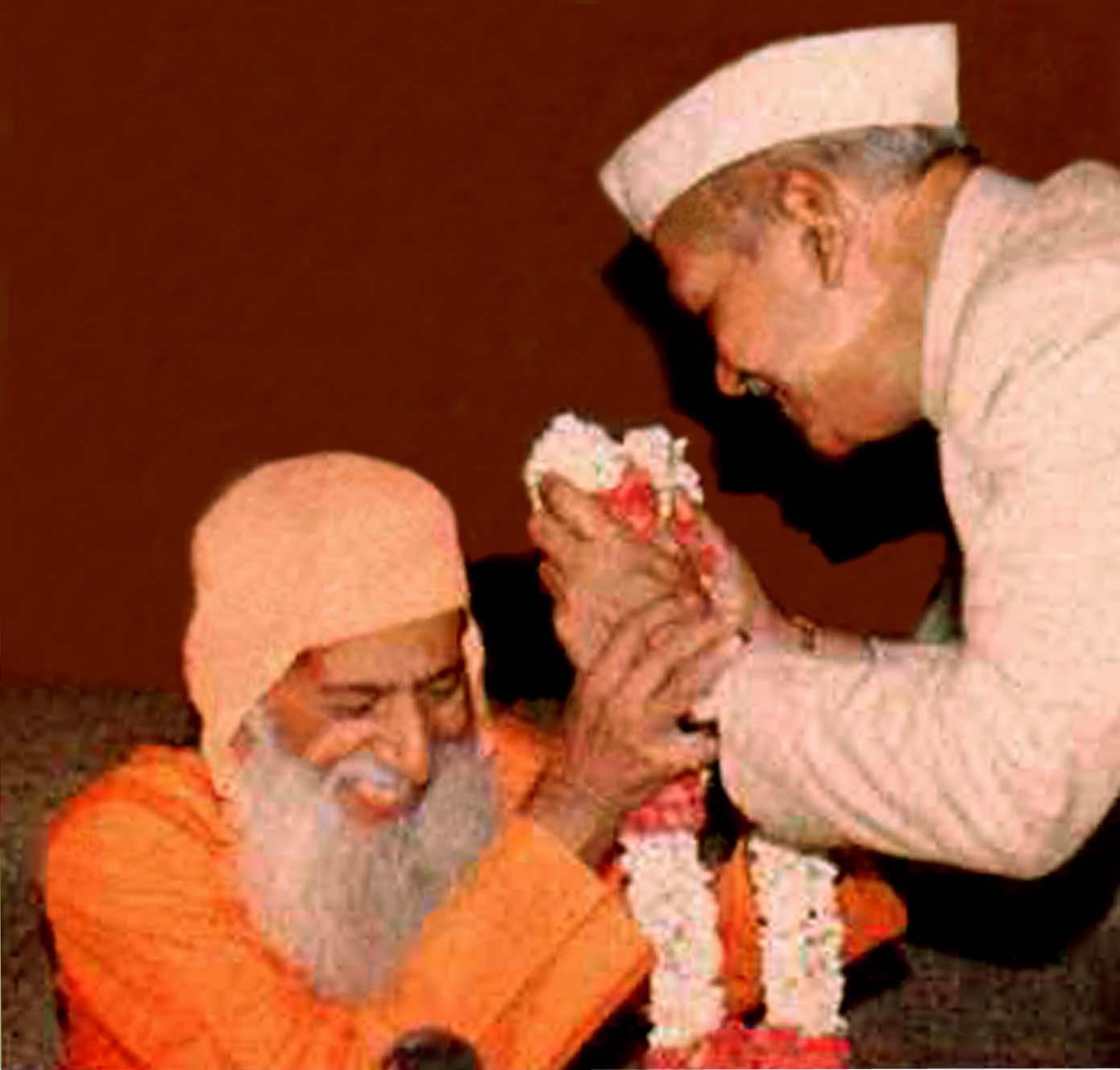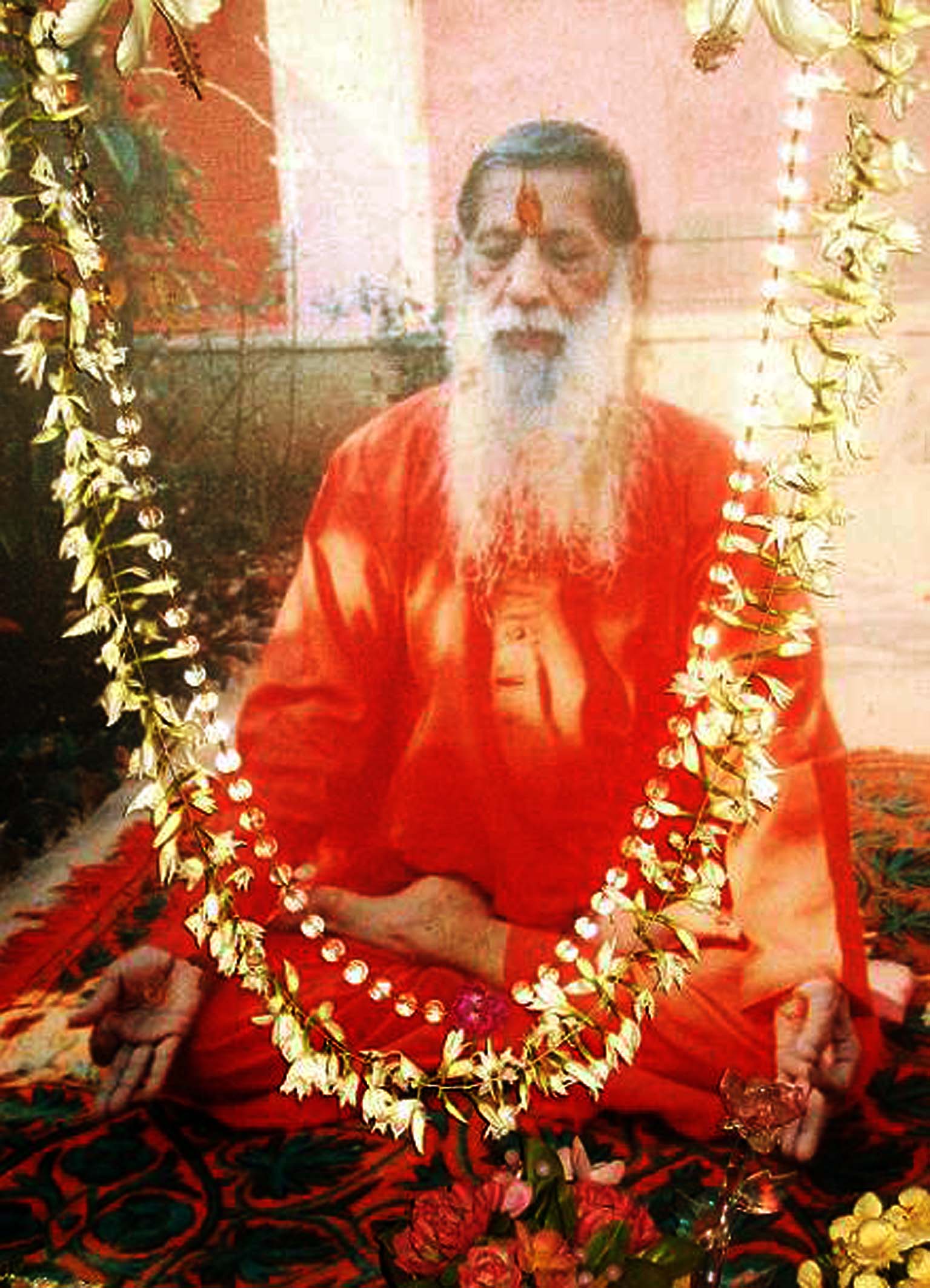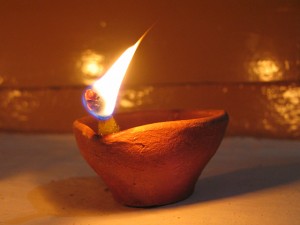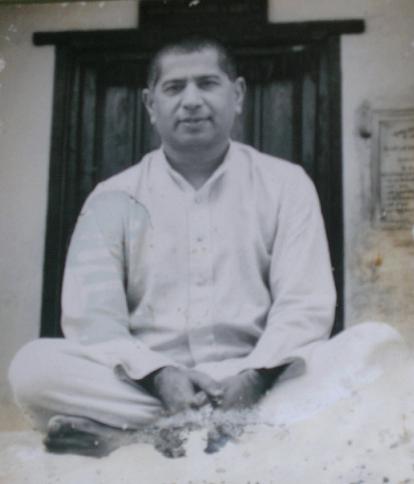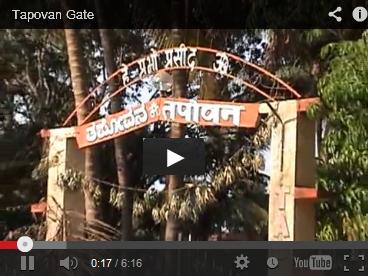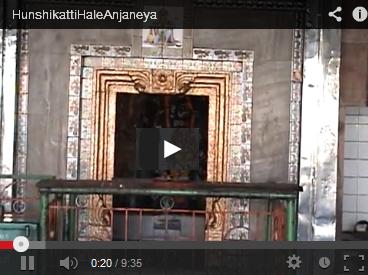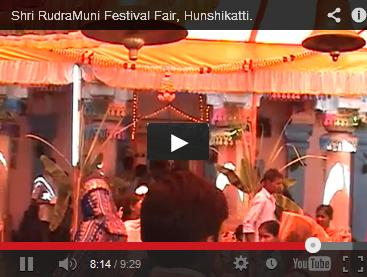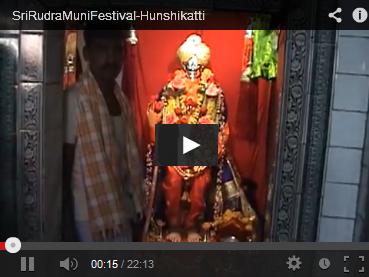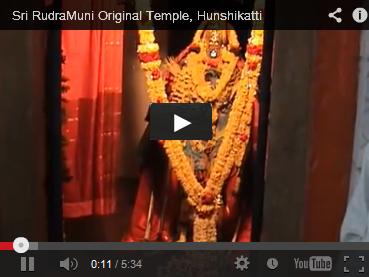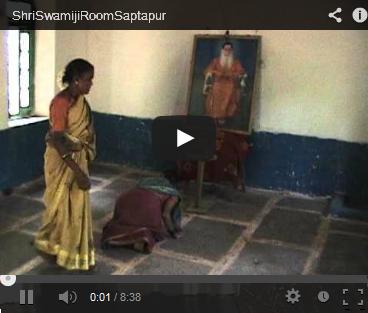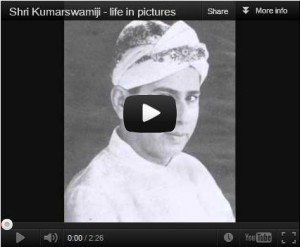Basava was the leader of the Veerashaivism movement. It was he who unfurled the banner of revolt against the Varnashrama. It was under his leadership that every aspect of the religion was planned and executed. It was under his leadership that every phase of activity planned and executed. It was he who got Allama Prabhu to guide the followers in the discussions held in the Shivanubhava Mantapa. It was again he who got the people together to carry things to a successful culmination and conclusion. Above all, it was he who exemplified the path of Bhakti (single-minded devotion to God) by his own perfect conduct. It is for all these reasons and for many more that Basava is called the precursor of Veerashaivism.
The recent findings of Mohenjo Daro and Harappa. have proved the existence of an advanced stage of civilization of a people that flourished in the Indus valley. They indicate that the Indus people, who belong to the Chalcolithic age which goes at least as far back as 3000 BC, were in possession of a highly developed culture in which no vestige of Indo-Aryan influence was to be found. Sir John Marshall in his ‘Mohenjo Daro and Indus Civilization’ devotes one full chapter to the religion of the Indus people. Therein he concludes that these people worshipped a Mother Goddess, Shakti and a male deity, Shiva. He identifies the male deity with Shiva because of the prominent characteristics of the deity having three eyes and being a Mahayogin, as represented on seals, images, carvings and other signs discovered at different sites. They also worhsipped, he says, Linga, the sun, animals, trees etc. Thus remarks Sir John Marshall: “In the religion of the Indus people there is much, of course, that there might be a parallel in other countries. This is true of every prehistoric and of most historic religions as well. But, taken as a whole their religion is so characteristically Indian as hardly to be distinguishable from the still living Hinduism or at least from that aspect of it which is bound up with animism and the cults of Shiva and the Mother Goddess – still the two most potent forces in popular worship.1
These conclusions of Marshall regarding the religion of the Indus people having been based on the evidence mentioned, are not considered very authoritative. Nilakantha Shastri of Madras raises formidable object: He says, “While Marshall’s explanations appear conclusive in regard to the cult of the Mother goddess, the tree and animal cults, his speculations on the male god, who he thinks, was the prototype of the historical Shiva, are rather forced and certainly not so convincing as the rest of the chapter. It is difficult to believe on the strength of a ‘single wrought carved seal’ that all the specific attributes of Shiva as Mahesha, Mahayogin, Pashupati, and Dakshinmurti were anticipated in the remote age to which the seal belongs.”2 It is thus essential that his conclusions should be further substantiated and supported by additional proof such as the inscriptions. And this is exactly what has been done by Father Heras whose reading of the inscriptions proves undoubtedly that Shiva and Shakti were the chief deities of the Indus Civilization.
In the lengthy and learned dissertation,3 Father Heras very successfully unravels the network of the Picto-phonographic inscriptions of the Indus Valley. The considerations of space does not permit us to give a detailed description of the inscription as deciphered by him. He raises a pertinent question as to the authorship of the Indus Valley Civilization. Marshall is content to name it the civilization of the Indus people. Though Marshall and his collaborators have definitely proved with a profusion of arguments that the inhabitants of Mohenjo Daro were certainly pre-Aryan, they are not definite about race. Here comes Father Heras with his decipherment of the picot-phonographic inscriptions to prove that Mohenjo Daro people were definitely Dravidians in their race. Hence it is no wonder that in the light of the recent researches, some scholars have come forward to assert that Dravidians were the inhabitants of India and gradually evolved a civilization of their own in all evolutionary stages and ages of early men’s life. Govindacharya Swami observes: “Hence, we shall not be far wrong if we infer that South India gave a refuge to the survivors of the deluge, that the culture developed in Lemuria was carried to South India after its submergence and that South India after its submergence was probably the cradle of the post diluvian human race. As the center of gravity of the Dravidian people determined by the density of population, lies somewhere about Mysore, South India must be considered as the home of these people, whence they might have spread to the North 4. Dr. Chatterji says, “It would be established, provided Hall’s theory of Sumerian origin be true, that civilization first arose in India and was probably associated with the primitive Dravidians. Then it was taken to Mesopotamia to become the source of Babylonian and other ancient cultures, which form the basis of modern civilization.”5
Image Courtsey — http://www.harappa.com
The decipherment of the Mohenjo Daro inscriptions help us to have a glimpse of the religion and philosophy of Proto-Indians or Dravidians. The self-existence of God is evident from the name of God, Iruvan. “The One who exists.”6 The early idea of the yogic discipline can be perceived from the images of figure of An, the male deity, seated in a yogic posture. The female deity is called Amma or Shakti; now Amma is the common word for mother in the Dravidians languages and a good number of clay statues of Mother Goddess have been found in Mohenjo Daro and Harappa. The conception of Linga among the Indus people was in the sense of coming together of Shiva and Shakti. Father Heras observes thus: “Before ending, we must refer to another link still existing from those ancient days between Mohenjo Daro and Karnataka. The modern Lingayats of the Karnataka country depict a sign on the walls of their houses, the meaning of which does not seem to be known to them. The sign ‘X’ represents the Linga. This sign is often found in the inscription of Mohenjo Daro and Harappa. It reads Kudu and means ‘meeting’, ‘union’. The sign, very likely refers to the prominence of male and female powers, which is so prominent in the religious tenets of the Veerashaiva sect.”7
The concept of Linga as the union of positive and negative principles is conspicuous in the Shivagamas. The attempt to identify Shakti with woman and Shiva with man is a blatant blasphemous error. As a matter of fact they are neither male nor female, nor even neuter. For, the Shivagams declare in unmistakable terms that Shiva is the Sat aspect of Reality, while Shakti is its Chit aspect. Shiva and Shakti are, as it were, the transcendent and immanent, the static and dynamic, the personal and impersonal aspects of Reality. But the Agamic seers have endeavoured to resolve the perpetual opposition between these two aspects, not by taking these apparently incompatible aspects one after the other, but by ascending to a height of spiritual intuition at which level they melt and merge in the unity and hence can be perceived as the completing opposites of a perfect whole. Linga is therefore the unifying principle of Shiva and Shakti, of the Sat and the Chit aspects of Reality 2.
Madame Blavatsky in her “Key to Theosophy” says that Theosophy means divine wisdom or Brahma Vidya and it comes to us from the Alexandrian philosophers called the lovers of truth. The name Theosophy dating from the third century A.D. began with Ammonious Saccas. His disciples started the eclectic theosophical system. They were also denominated Neo-Platonists. But its origin is much earlier, as has been attributed to the Egyptian priest Pot Amun, who lived in the early days of the Ptolemic dynasty. Diogenus tells that the name is Coptic and signifies one consecrated to Amun, the God of wisdom. But, here we venture to say that Amma, which is the correct form of Amun, is not originally the Egyptian deity. In reality, it belongs to India and especially to Dravidians in whose Trinity Amma constitutes the middle term. Amma, Uma, Maya, Mata are all cognate terms implying the divine power and wisdom of An or Shiva, the transcendent Reality. So, if we trace the origin of Theosophy impartially and without any bias, it goes back to the Dravidian culture and then it finds its source and deity centuries before the Aryans stepped into India from the banks of the Volga.
Dravidians lived not only in the Indus Valley and the Deccan plateau but were also spread all over India. They had developed their civilization and language and had commercial relations with Egypt, Chaldea and other Mediterranean countries. It has been now proved that the names of certain articles which King Solomon’s trading ships brought him, were not originally Hebrew. These articles are sandle wood, ivory, peacocks, apes, and teak which could easily be traced through the Hebrew corruptions, have all along been set down as Dravidian words. In the ruins of ancient Ur of the Chaldeas built by Ur-Ea, the first King of United Babylonia, who ruled 3000 years B.C. was found a piece of Indian teak; and it is to be noted the teak grows in Southern India from where it was exported to Babylonia. These facts simply point to well established commercial interactions, between Dravidian India and Babylonia or Chaldea. It is but natural that with the export of commercial commodities, the cultural ideas must also have been exported into Chaldea from Dravidian India. One of the cultural thoughts that dominated the Chaldean mind was Mina-kan. In the Dravidian religious life, Min-Kan or the fish-eyed represents the Supreme Deity. We read in the story of Chaldea that Fish-God is the civlizer of Chaldea. The identity between Manu’s preserver and Ea, the preserver of Hasiasdra is more than indicated by the fish-disguise of the former, which is also the symbolic form of the latter, as abundantly shown by the monuments and even appended to God’s name of Ea-Ha. This idea of Fish-God together with the story of deluge later incorporated into the Aryan literature and finally figured as Matsyavatara. Here it is pertinent to mark the quotation of Ragosin, the author of the Vedic India, “the most remarkable bequest left to classical Aryan India by the intimacy between her pre-Aryan inhabitants and their Chaldean race-brother, is the legend of the Deluge, in which the part of Hasisadra and Biblical Noah is given to the Aryan sage and progenitor of the present human race, Manu. The story has no roots in the Aryan myth in which it stands alone, unconnected with any of its legends.”
An account of Dravidian religion and culture as gathered from the Mohenjo Daro inscriptions may be cited as follows:
The Supreme being is addressed as Iruvana, one who exists. The life of the Supreme Being is termed Val, which means open eye and thereby it signifies omniscience. He is Enamai – eight bodied. He is known as Munkana – three eyed. Lastly, he is described as Tandavan. This shows that the idea of God dancing as the source of all the movement of the Universe is a very old one. There is also the concept of the divine triad in Dravidian religion. An, Amma and Anil correspond to the later Veerashaiva Trinity of Shiva, Shakti, and Sharana. The characteristics of the Dravidian religion may be stated as follows :
1. There is a Supreme Being who has static and dynamic aspects, such as oneness and greatness, power of generation and destruction.
2. The Supreme Being has three yes and eight forms, his names such as Iruvan, Enmai, Bidukan, Munkan and Tandavan are still current in the present day Shaivism.
3. The Supreme Being has as its emblems Tridant, the snake, the axe, which are still the characteristics emblems of Shiva.
4.The modes of worship are seeing (Darshana), thinking (Mananan) and meditation (Dhyana), sprinkling him with water, milk etc. The Dravidians had their own temples and celebrated religious festivals on appropriate occasions. There was also the Linga’s worship. They had some idea of death and judgment after death. They also thought that a life of virtue was rewarded in heaven, and that of sin awaited punishment.
The name of Shiva is not found in Rigveda as the proper name of a Deity. But there are many indications in Rigveda which prove that Rudra of Rigveda is the Shiva of later times. He is said to be Pashupati, the lord of the cattle (jivas). He is spken of as Gathpathi, the lord of songs and the lord of sacrifice. He is also called Kapardin and this name belongs to Shiva. In the Yajurveda, Rudra is more firmly established as the one without a second. He is mentioned several times by names which are particular to Shiva, such as Mahadeva, Shankara, Shambhu, Ishana, Isha, Bhava, Shara. In Shatarudriya which forms the 50th chapter of the Yajurveda, the famous panchakashari mantra occurs.
The Vedic gods are not treated with respect in the Upanishad and sometimes they are belittled as in the Kenopanishad. But the noteworthy thing in Kena is the mention of Uma, the daughter of mountain Himavat. Though she has not been mentioned here as the consort of Shiva, it is impossible to believe that she was not so. Indirectly the story proves that the wonderful being or Yaksha is Shiva. It is in the Svetashvetatara Upanishad that Rudra-Shiva attains the highest position as Parabrahma. This Upanishad establishes the theistic God, instead of the Absolute Brahma of the other Upanishad. The doctrine of Bhakti to Rudra-Shiva with a view to securing his grace for final beatitude is taught with force without divorcing it from Jnana. Thus it continues Bhakti with Jnana so that the devotee might attains oneness (unity) with Rudra-Shiva.
The two great epics, the Ramayana and the Mahabharata deal with Shaivism. Rama is said to have broken the bow of Shiva as wager laid down by Janaka to marry his daughter Sita. This shows that Shiva was the deity worshipped even by some Aryans. On the shores of the sea, Rama worshipped the Linga which is known even to this day as Rameshwara Linga. There is nothing improbable in this, because all Dravidians were the worshippers of Shiva. Moreover the creed of Shiva worship had spread among Shudras in the times of Ramayana. The scene Shambuka vadha is pathetic as Rama himself was forced by the orthodox section of the public to decapitate Shambuka, whose only sin was to practice prana. During the times of Mahabharata, the devotion to Shiva takes firm root in the land. The extensive area over which Shaivism had spread can be known from the Mahabharata by means of the holy places of pilgrimage described in that work. The description of holy places by Dhaumya in chapters 86-90 is in the order of directions East, West, North and South. This description bears testimony to the spread of Shaivism. Next come the Puranas, which are divided into two classes, one class belonging to and glorifying Vishnu and the other belonging to and glorifying Shiva. But in the Puranas the sectarian spirit is predominant; Vishnu and Shiva have been alternately raised up and lowered down in the Puranas by their respective followes.
The prevalence of Shaivas is attested by Patanjali in the second century B.C. He mentions the Shiva, Bhagavatas, ascetics moving about with iron trident in hand. He also mentions of the images of Shiva and Skanda made of precious metals and apparently used in domestic worship. In the early centuries of the Christian era, namely during the Kusans period, Shaivism prevailed. The earliest coins bearing Shiva emblems, an image of Shiva with trident in his hand on the observe and his bull on the reverse belong to the Kusans era. The end of the Kusan rule synchronizes with the rise of Bharashivas. Bharashivas adopted Shiva as the presiding deity of their empire. Shiva was their Ishtadevata. The air was surcharged with the belief that the destroyer himself had founded the Bharashiva state. The Vakatakas succeeded the Bharashivas and their dynasty came into existence about a century before the Samudragupta’s conquest. Their kingdom developed into an empire. They carried on the policy of Bharashivas. In South India, the Pallavas, like Bharashivas and Vakataks in North India, had made Shaivism their state religion. They ruled from 295 A.D. to 360 A.D. It is during the period of 63 Nayanars that Shaivism flourished and became firmly rooted in the land so as to get the better of Buddhism and Jainism which came into religious and dogmatic conflict with Shaivism. They lived for a period of eight centuries, from the 4th to the 11th century. During the first eleven centuries of the Christian era, Shaivism prospered in South India and made tremendous progress.
To recapitulate, Veerashaivism historically is considered a fine and full-blown flower of Shaivism. The inscriptions of Mohenjo Daro and Harappa have revealed the astounding truth that the cult of Shiva was prevailing as far back as 3000 B.C. To quote Sir John Marshall: “Among the many revelations that Mohenjo Daro and Harappa have had in store for us, none perhaps is more remarkable than the discovery that Shaivism has history going back to the Chalcolithic age or perhaps even further still, and it takes its place as the most ancient living faith in the world” Again to quote Dr. Prana natha: “The cults of Shiva and Mother Goddess have already been shown to be very old. It is interesting to find them current as far as 3000 B.C.” Scholars like Father Heras are of opinion that Shiva as the God of the Dravidians and it is addressed as the Lingodhbhavamurti, the Self-Existent Truth. The image of Shiva called Shivalinga, found in all the Shaiva temples throughout India, is only a plastic representation of the self-existent-truth. This Shivalinga form of worship as we have it in the temple even today is the characteristic feature of Shaivism.
In ancient times the Shaivas formed a set of men and women, high and low, without the distinction of caste and creed. The prominent characteristics of Shaivism, from its very inception, were the worship and meditation of the cosmic principle. But it is rather difficult to determine the time when Shaivism got its definite shape. However, the philosophy and practice of Shaivism have been set forth in the Agamas. The two streams of thought, the Agamic and Vedic, gradually gravitated towards each other. In the course of time, they acted and reacted upon each other and modified each other’s religious contents and practices. The Vedic fire cult languished and decayed and was replaced by Agamic worship of images in the temples and houses.
The Vedic Varnasharama was accepted was accepted and incorporated in the Agamic lore. Hence we find the influence of Varanshramas running either subtly or grossly throughout all the schools of Shaivism. Thus Shaivism has flourished with minor differentiations from pre-Vedic times to the end of the 11th century, and its exponents have hailed from the North as well as from the South. But, the beginning of the 12th century, saw the ascendancy of Jainism and Vaishnavism and the decadence of Shaivism. By the middle of the 12th century, there appeared on the horizon of the religious firmament of Karnataka the great saint, Basava, who rescued Shaivism from its decadence, freed it from the shackles of Varnashrama, and gave it a new orientation and a new sense of direction. It is this revived, rejuvenated and revolutionary Shaivism that goes by the name of Veerashaivism.
As efforts in the direction of historical research are bearing fruits, it is becoming crystal-clear that Basava is the precursor of the Veerashaiva faith, that it is a religion with Linga as the guiding and central theme, that the Lingayat religion has its own individuality and independent status and that it has a path, practice and philosophy. Some information about the Lingayat Religion has already been supplied by learned scholars like Dr. Fleet, Rice, Enthoven and others; but on the whole the available information is very scanty and misleading in many places because they were not in possession of the correct and relevant information, which is only now becoming available. The European scholars who are mainly responsible for bringing into the limelight the Indian cultural heritage all over the world, have neither studied nor cared to study the Lingayat religion and its literature as much as they ought to have. They formed some superficial ideas about the religion either from hearsay or from the perusal of a biased book or two. Hence we find damaging remarks made about the religion and especially about the explanation of concept, meaning and significance of the Linga.
The general bulk of the Shivagamas from the Kamika to the Vatula is twenty eight in number. The latter portions of these Agamas treat Veerashaiva doctrines and rituals. Most of
12th century saint Mahatma Sri Basaveshwar
Basava gave a different turn and form to Shaivism by separating the Varnashrama from it. He adopted the five aspects of Shivapuja namely Vibhuti, Rudraksha, Mantra, Padodaka and Prasad and wove them together in Ashtavarna by adding to them Guru, Linga, and Jangama. He gave the Jangamas, the itinerant preachers, the responsibility of guiding the followers and removing the obstacles and difficulties that beset the spiritually aspirants. He showed the importance and necessity of the Guru as the instructor in spiritual matters. He gave a definite meaning to Linga and made it the central and vital point of this revitalized religion. His religion was the religion of Ishtalinga. He made religion a personal affair under the constant guidance of Guru and occasional instructions of Jangama. He destroyed the artificial barriers put against women in the matter of the privileges of religious life. In the same way, he did away with the inhuman exclusion of a section of the people branded as the Shudras from the privileges of religious and social life. He thereby turned Shaivism into Veershaivism by these far reaching and astounding changes that worked like a miracle and changed the socio-religious fabric of the Hindus of his times. He framed Shatsthala, the technique of Shivayoga on scientific basis. For his stupendous work, he started Shivanubhava Mantapa for an open thorough debate. He extended all facilities to his followers to practice the principles and to prove the efficacy of Shivayoga. All this was done in a short span of one decade. The new movement spread like wildfire and attracted followers from all parts of India. Thus, Basava was the leader of the Veerashaivism movement. It was he who unfurled the banner of revolt against the Varnashrama. It was under his leadership that every aspect of the religion was planned and executed. It was under his leadership that every phase of activity planned and executed. It was he who got Allama Prabhu to guide the followers in the discussions held in the Shivanubhava Mantapa. It was again he who got the people together to carry things to a successful culmination and conclusion. Above all, it was he who exemplified the path of Bhakti (single-minded devotion to God) by his own perfect conduct. It is for all these reasons and for many more that Basava is called the precursor of Veerashaivism.
– OM SHANTI | OM SHANTI | OM SHANTIHI –
This article ‘History of Veerashaivism’ is taken from H.H.Mahatapasvi Shri Kumarswamiji’s book, ‘Veerashaivism: History and Fundamental Concepts’.











